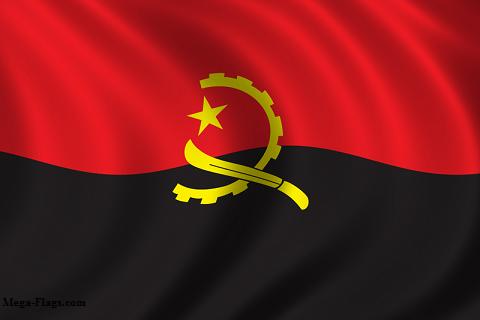As Oxford’s Ricardo Soares de Oliveira also discussed in a recent blog post, not all is well with Angola’s oil-reliant economy. After petroleum prices started to drop last year, the country’s remarkable economic growth over the last few years came to an almost standstill. Macroeconomic improvements, applauded by the International Monetary Fund and others alike, are rapidly proving inadequate. As Angola celebrated its 40 years of independence this month, there are serious doubts being raised about the viability of its oil-led development model.
Deepening dependency
Oil has been produced in Angola since the 1960s. Back then, however, the prosperous Portuguese colony also boasted other economic assets. Coffee production was the fourth biggest in the world and a fishery industry was already well established. In the last years of empire, Portugal even started to look beyond commodity production, investing in the infrastructure and manufacturing.
When Angola finally gained independence in 1975, civil war quickly engrossed large portions of the territory, reversing gains over the previous two decades. By 1987 the country’s GDP was around half that of pre-independence levels.
The only exception to the collapse of the economy was the oil sector. During the civil war, international oil companies endured and proved invaluable allies to the ruling party, the People’s Movement for the Liberation of Angola (MPLA). By the early 2000s, Angola had become the second largest petroleum producer on the continent.
Since the end of the war, oil has been key to rebuilding the country. From 2002 to 2013, the state received US$450 billion worth of oil income. But the economy has not diversified. Oil accounts for 98 per cent of exports and 80 per cent of the countries fiscal revenues. Angola has the second highest export concentrations in the world, according to the United Nation’s Development Programme
Falling prices, plummeting fortunes
In 2014, Angola was still reaping the benefits of high petroleum prices. The country had experienced some of the highest economic growth rates on the continent and was making clear strides to better manage petroleum income. The government had by this point built up large reserves of foreign exchange to buffer against potential volatility, reduced annual inflation from 31 per cent in 2004 to 7,5 per cent a decade later,and established of a sovereign wealth fund to help diversify the economy.
Even still, given Angola’s overreliance on one single sector, these measures are proving insufficient in the current context of low oil prices. Macroeconomic reforms are only scratching the surface of the structural changes that the country needs in order to end its extreme dependence on the market for its oil.
Volatile prices mean uncertainty, and Angola’s vital imports rely on predictable exports. Government numbers indicate that Angola imports 70 per cent of all foodstuffs and 80 per cent of its domestic fuel. In September the Central Bank governor José Pedro de Morais reported that funding reserves had shrunk by 21 per cent over the last year. Currently, these figures are closer to 30 per cent.
In response to falling income from its leading sector, the government slashed its 2015 national budget by 25 per cent, squeezing further an economy that relies heavily on public cash. As the state struggles to pay its suppliers, many public and private employees report goings months without wages. This is similar to the situation in 2008-2009 when the African Development Bank estimates that the Angolan government was facing US$7.5 billion in arrears.
What can be done?
Unfortunately, previous crises have failed to motivate the policy reforms needed to encourage the kind of transformation Angola needs to alter the composition of its economy. In a country were the state has remained the main economic player, structural change is becoming increasingly difficult as the public sector struggles to finance its undertakings.
At the same time, the present crisis represents an opportunity to shift attention to other sectors of the economy, which for a long time have struggled to progress beyond subsistence level. This might change. With official value of the local currency (Kwanza) depreciating by almost 30 per cent against the US dollar over the last year, the tide appears to be in the favour of domestic production. And the huge difference between the formal and informal markets for exchange rate in Angola suggests that there is room for the kwanza to devalue further.
Scarce cash for imports is one important incentive for diversifying the economy and to increase the domestic supply of goods, including in agriculture and manufacturing. Enhancing national production would of course also depend on improvements to the business environment as well in efficiency, both of which remain great challenges for businesses seeking to operate in Angola. Securing alternative source of funding is also important.
At this moment, though, it remains to be seen whether policy-makers and (the few) private investors will take advantage of the current economic situation to move beyond dependence on the dominant oil sector. Otherwise, Angola is likely to continue to ride the wave of booms-and-busts.







